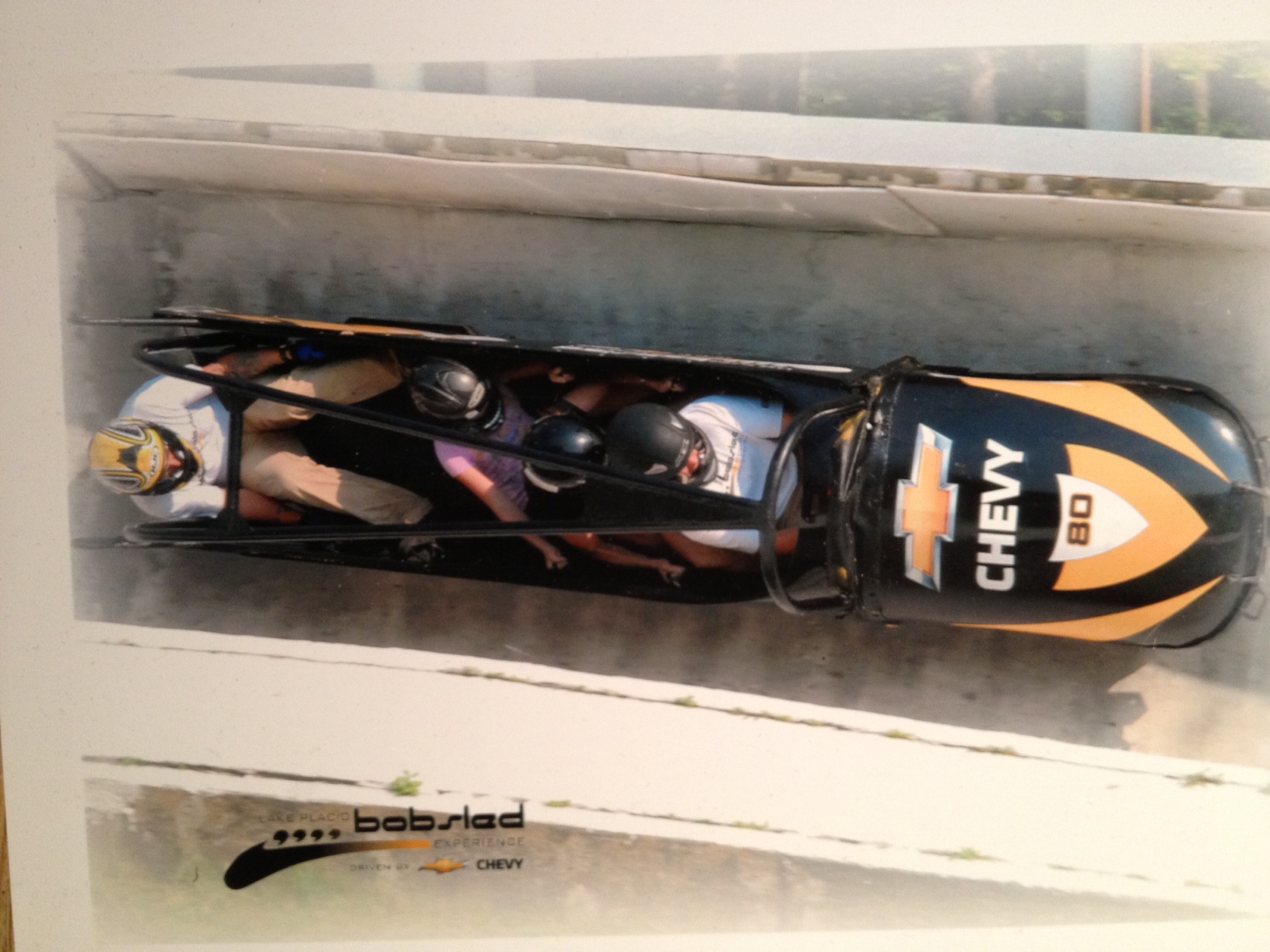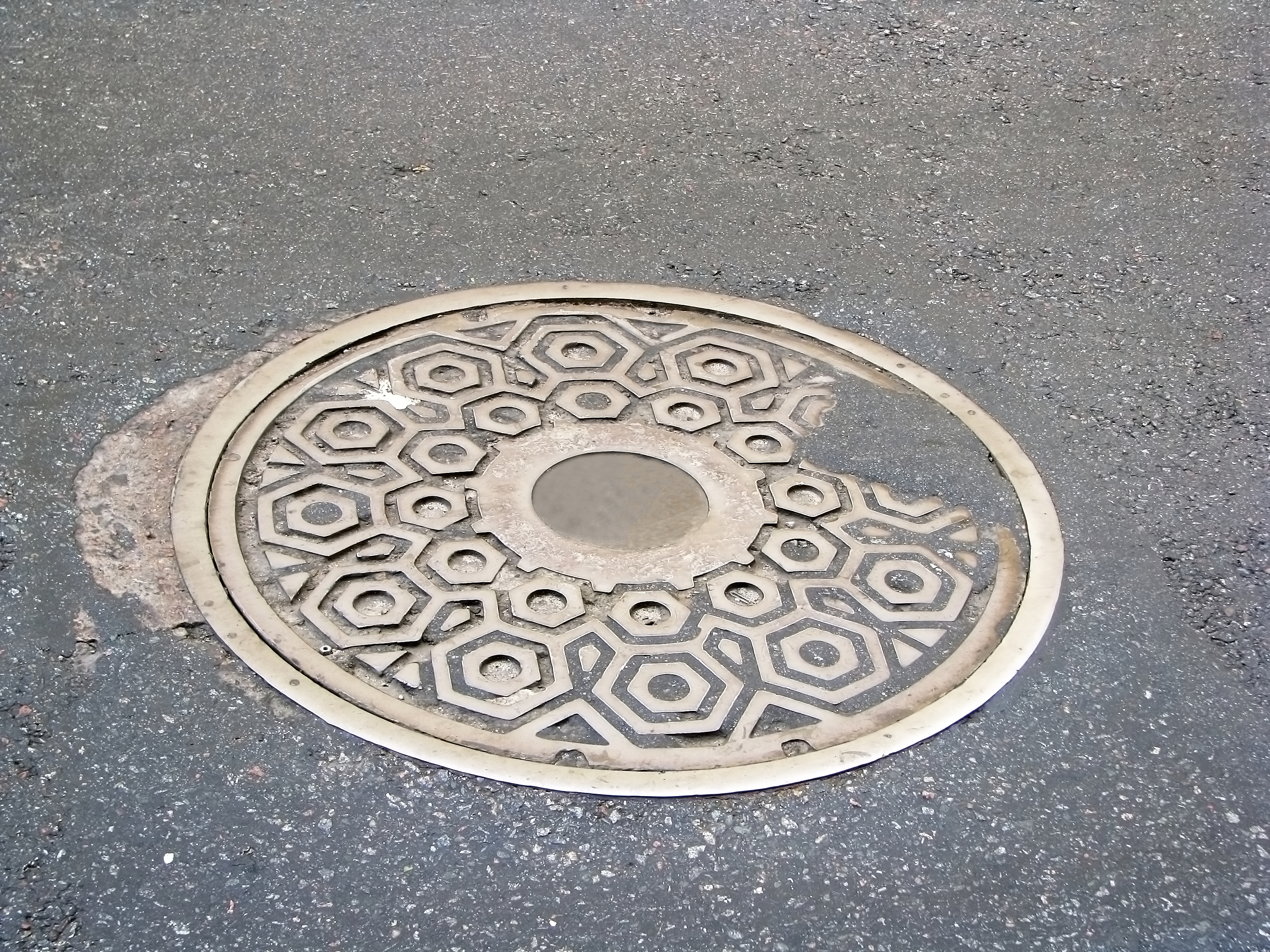In 2011, I became a member of the U.S. Bobsled Federation.
It started one August morning in Lake Placid when I found myself at the top of Mt. Van Hoevenberg donning a sturdy helmet and nerves of steel. An experienced bobsleigh brakeman and driver reached for my arm and helped me cram into the tight-fitting cage of a 4-seater. They told me to hold on tight.
The sleigh would soon speed down the same curvy chute used in the 1980 Winter Olympics, flying through turns that racers from all over the world trained and medaled.
If our sled would descend the half-mile path without flipping, a guide would be at the bottom to present me with a souvenir lapel pin and a certificate of entrance to the U.S. Bobsled Federation. Worth the risk.
Adjusting my helmet straps while fidgeting in the cramped cage, I wondered if athletes often feel uncomfortable. I also wondered about my daughter (11 years old at the time) who joined me in the sled, wedged between my back and the brakeman’s legs. She was, no doubt, oblivious to the consequence of death.
It was then that the driver signaled, and in an instant, the sled took off. We thundered ferociously while banking left, then right, and popping in and out of tunnels while the wind smacked our faces and dried our eyes. In a frenetic 50 seconds later (which featured one crushing G-force of a curve), we eased to a stop, caught our breath and hoped someone snapped at least one good photo that didn’t catch expressions of horror.
That’s not exactly how it’s done in Sochi, but it came close enough for me. In fact, just knowing that I cruised the same path as those I watched from my TV room long ago, was downright thrilling.
Every year the Lake Placid Bobsled Experience gives thousands of people like me and my daughter the ability to pay $85 and sample what we watch on TV every four years. I imagine it’s helping the sport build spectators – and storytellers!
In hindsight, I’ll take off my bobsled helmet and put on my marketing hat. And I wonder… as many of us go about our day jobs where influencing, persuading and selling is our role, are we providing experiences that our customers want to tell stories about?
It’s challenging to pull this off. First, if you want to create outstanding experiences, you have to break the mold and do what everyone else is not doing. For example:
- If every software company’s website features a white background with a photograph-as-a-banner and three professionally-designed icons 2/3rds of the way down the page, you should too. They obviously know something you don’t.
- If you’re unveiling a new location for your company, it’s important that you first gather 20 VIPS, then line up management and politicians in two rows from the middle and ask the person standing near the podium to wrangle oversized scissors and cut a thick red ribbon while the crowd claps loudly.
- If you are hosting a charity fundraiser, you must include cocktails, then dinner, then a silent auction, then a number of speeches, then a band. Add flower centerpieces and nametags. Don’t forget the parting gift donated by a sponsor and tossed in a hand-tied homemade bag.
These are molds. As time-tested formulas, they may be efficient, but the problem is that they are expected. They are traditions, not memories.
This brings me to the second challenge: overcoming the need to rely on the comfort of traditions. All I can say here is that we humans love our traditions. But we tend to recall traditions in aggregate – as a continuum of events, not as a single event. That’s not a good recipe for a marketer looking to disrupt.
For your next launch or introduction or marketing campaign, think more about creating a Bobsled Experience:
- Make it fun – perhaps a little frightening
- Provide relevancy while still piquing curiosity
- Exceed their expectations
- Tap into human fascinations as this is what draws us closer to anything that we don’t understand well
- Create a way for your customers to do something/be something/feel something that they’ll remember forever
- Give participants the tools to aid their storytelling (mementos, social media tips, photographs, recognition)
Your customers will become your storytellers, but you’ll have to earn their time and energy to be so. You’ll have to wow them. And you’ll have to set up the conditions to make their story unique and memorable – just like the day I joined the U.S. Bobsled Federation.
Have fun!



